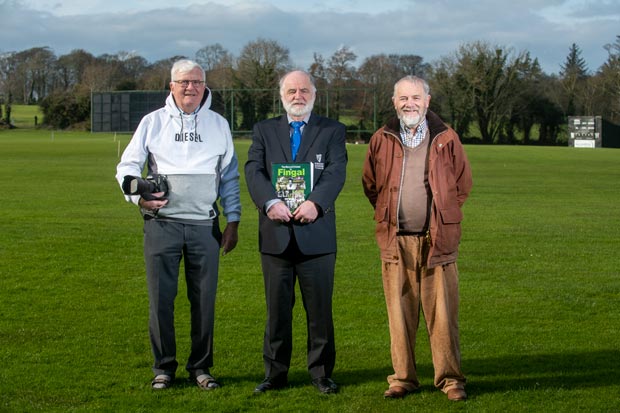Fingal in North Dublin has been described as the heartland of Irish Cricket.
In The Story of Cricket in Fingal by James (Jim) Bennett, the factors which enabled cricket to survive and then thrive in Fingal are analysed in detail and the inextricable links between cricket and the social, political, and cultural history of Fingal are examined by using archival material, anecdotal accounts, and photographs.

Author Jim Bennett: Photo by Fintan Clarke/Fingal Independent
This very comprehensive book (499 pages) is divided into three main sections. In the first part, the beginning of cricket in Fingal from its “Big House” origins in the 1820s, through to the establishment of clubs by members of the gentry in the 1860s, and finally the involvement of “ordinary people” are traced in loving detail.
The pivotal role which the Fingal Cricket League played in ensuring that cricket survived in Fingal despite the Land Wars, the GAA’s ban on foreign games, World War 1, the Easter Rising, the War of Independence and the Civil War is acknowledged and there is a well-deserved tribute to the administrators and players in Fingal who refused to be dictated to regarding what sports that they might or might not play.
The second part of the book is devoted to concise histories of ten cricket clubs, some of which are no longer in existence, while others have continued to thrive.
In the order in which they appear in the book, they are Knockbrack. Skerries, Garristown, Portrane, Balbriggan, Malahide, Rush, the Black Hills, The Hills, Ring Commons, Man-O’-War, Balrothery and North County.
We read about the families who have contributed so much to cricket in Fingal, in Leinster and at the international level, and while we read about the great rivalries between the clubs, there is also a very strong sense of collective loyalty to Fingal cricket.
Throughout the book, there are wonderful anecdotes and we read about some great characters whose passion for cricket has been passed down from generation to generation.
There is very commendable use of quotations from old newspapers, and they show how far removed “old-style reporting” was from the more guarded accounts which we read today.
Each chapter contains some photographs, but the third section contains a superb collection of photographs, many of which are from Joe Curtis’s wonderful photographic archive.

Joe Curtis, Jim Bennett, and Martin Russell
Although cricket provides the underpinning for this book, the emphasis is on people rather than on giving detailed accounts of games.
It was obvious that this was a labour of love for the author, and he is to be commended for making a very positive contribution, not just to cricket history, but to social history.
At present, the book is available from Amazon in digital and paperback formats, while copies are also available from The Skerries Bookshop.